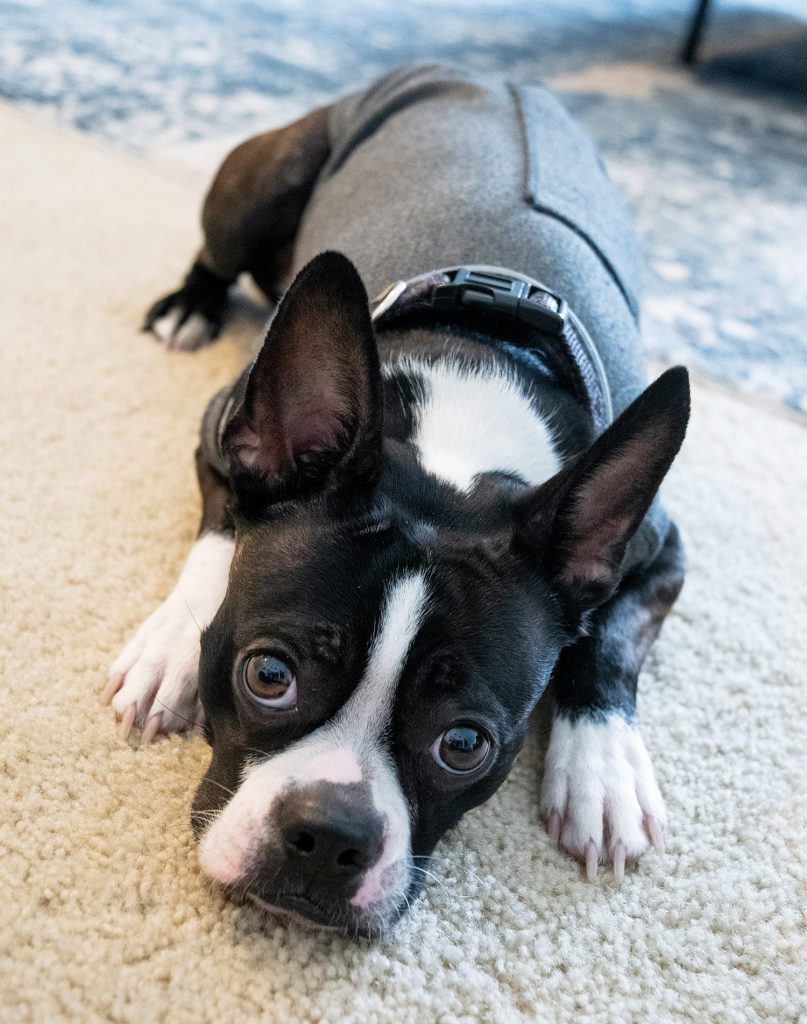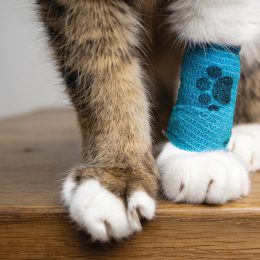
Does your dog jump, shake, tense up, cower, become anxious or crawl under a bed with an approaching storm? If so, your dog might be suffering from anxiety or phobias related to storms or loud noises.
Just as in humans, some unusual behaviors in dogs may not ratchet up to the point of concern. But it’s time to seek professional help if your dog engages in destructive behavior like chewing, digging, scratching and tearing up objects in the home. Severe phobia can trigger panicked attempts to escape by scratching and digging at doors or even jumping out of windows. A dog may injure itself — breaking teeth or nails — or people during a panic attack.
Veterinarians don’t know all the triggers but suspect the dogs are set off by some combination of wind, thunder, lightning, barometric pressure changes, static electricity, and low-frequency rumbles preceding a storm that humans can’t sense. Fireworks, gunshots and vacuum cleaners are also common causes of anxiety and fear in dogs.
Here are some ways veterinarians suggest helping your cowering canine through a storm:
- Reward calm behavior year-round. Don’t wait to soothe a dog when it’s whimpering or climbing on you during a storm; your dog may interpret that as extra attention — which will encourage more panicky behavior. But also, never scold your dog for its increased clingy behavior or ignore it. Try to stay calm yourself; your dog will sense your fear or nervousness during a storm which will reinforce its belief they should be afraid.
- Shelter. Notice where your dog likes to go during a storm and let it go there, if possible. You may want to move to an area with no outside doors or windows, such as a finished basement or a tiled bathroom. If your dog prefers its crate, try covering the crate with a blanket until the storm ends.
- Consider a snug garment. Snug-fitting shirts and wraps especially designed to calm anxious dogs may be worth a try. A so-called pressure garment is said to have a calming effect similar to swaddling a baby. You can also make your own by wrapping your pet in a stretchable bandage, towel or old T-shirt. Just be sure not to wrap your pet too tightly that it can’t breathe.
- Medicate. Finally, if all else fails, the use of medications, such as sedatives, can be helpful in severely affected pets. Supplements, pheromones and herbal remedies are also available.
- Talk to your veterinarian. As with any concerns you have for your pet’s health or safety, the best bet is to see your vet. A vet can help determine if your pet is suffering an anxiety or phobia, or if there is an underlying physical ailment causing an overreaction to outside stimuli. Your vet may also have more ideas for behavior modification and can help you determine what supplements or remedies to try, or if a prescription of anti-anxiety medication is needed.



